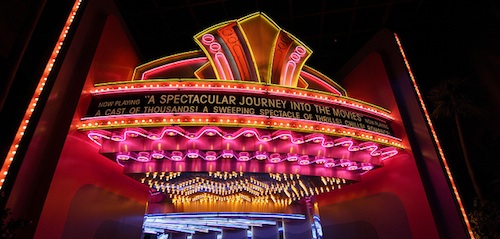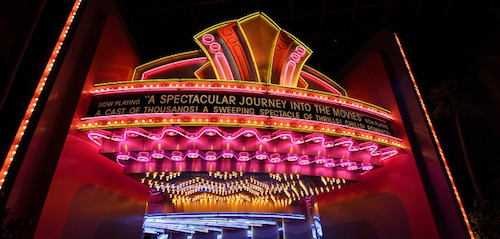 According to UNESCO, in 2012, 6,385,982,746 around the world went to the movies. That’s over six billion willing participants in agony, ecstasy, and everything in between.
According to UNESCO, in 2012, 6,385,982,746 around the world went to the movies. That’s over six billion willing participants in agony, ecstasy, and everything in between.
Because we know that our wellbeing is not at stake, when we go to the movies we willingly, even eagerly, give ourselves over to a whole gamut of emotions, including emotions we might actively recoil from in our daily lives.
Life is like a movie
In a very real sense, we live in movies of our own making. Our thoughts are like reels of film brought to life by the projector of consciousness. That’s why two people can share the same circumstances, yet experience entirely different realities.
One person cringes in the rain, another dances.
It’s why our own experience of a situation can change dramatically with a flickering change of thought. One moment we can be ecstatic about a new project, the next we are paralyzed by the same opportunity.
It’s magical, really. Marvelous. Through thought and consciousness we participate in an ongoing dance of creation, one that is continually producing movies that surprise and delight us.
And that can sometimes scare the crap out of us.
The dance of creation produces some upsetting movies
Sometimes the dance of creation gives rise to upsetting movies, movies which produce experiences we would rather not have. I mean experiences we really and truly do not want.
Intense anxiety, jealousy, and frustration, for example.
But consciousness is the most effective projector imaginable. Because it recruits all of our perceptions, as human beings, we have full bodied, wholehearted experiences of our thinking, not puny impressions of it.
So it is that knowing an experience is produced by a movie of our own making doesn’t make the experience go away. In reality, being human means getting lost in a movie from time to time.
The point is not to avoid getting lost in a movie. The point is to realize that we don’t need to be afraid of what happens when we do get lost.
Even when you’re lost, it’s still a movie
Even when you get so caught up in a thought-generated movie that you can’t seem to get out from under your feelings, it’s still a movie.
Even though you can’t change the reel or stop feeling what you feel, it’s still a movie.
And when you remember that it’s a movie, no matter how crappy or scary your experience may be, you realize you don’t have to get rid of it, change it, or fear it.
You can let it be.
Wait! Shouldn’t you change the film?
When you’re lost in the movie, the best thing you can do is let it be.
The idea that you should change the film reinforces the belief that what you experience in the movie can actually harm you.
And odds are that if you try to change your thinking, running a new film over the top of the old, the projector will jam, leaving you feeling even more stuck, trapped, and victimized by your experience.
But when you understand that all that is happening is that you’re caught up in a very real seeming movie, you can relax a bit. Your experience may not go away, and you still won’t like it, but you won’t be terrorized because you are having it.
As you relax, your sense of innate wellbeing will return, and your wisdom will gradually reassert itself. Your thinking will settle, and in time the movie will change of its own accord.
You don’t have to feel okay to be okay
Understanding the nature of the human experience doesn’t protect you from having one.
Realizing that you’re caught up in a movie doesn’t mean that the movie won’t affect you, but it does mean that no matter what is happening on the screen, you are always safe in your seat.
And remembering these things will remind you that you don’t have to feel okay to be okay.
You might as well enjoy the show.
Want more?
As a coach I point my clients in the direction of their innate wellbeing. As their understanding of the spiritual principles behind the human experience deepens, their joy increases. They act with greater ease, creativity, grace, and wisdom.
If this resonates and you’d like to have a conversation to see if we are fit, click here to visit my coaching page and schedule an interview.
Photo by Sam Howzit via Flickr


